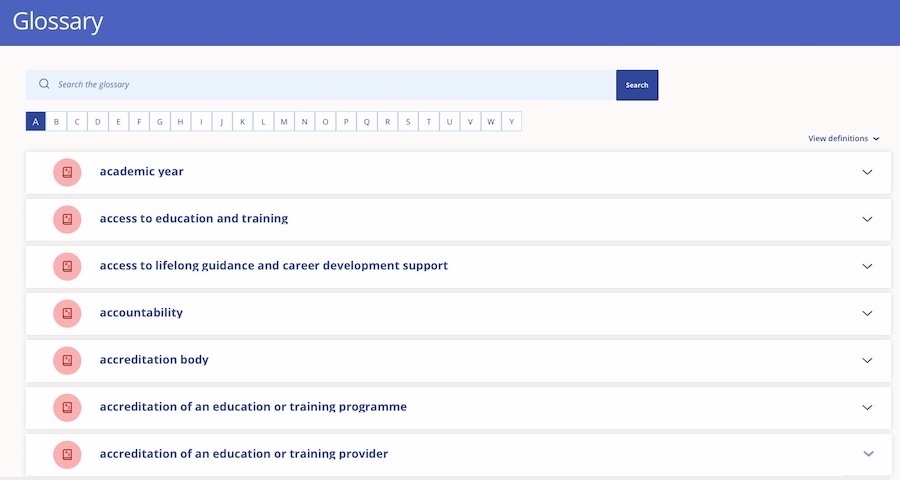Cedefop celebrates the European Year of Skills 2023 by launching an updated, comprehensive, multilingual glossary of terminology of European education and training policy that will serve as an invaluable instrument for effective communication among stakeholders in the field.
The online tool, a revised and augmented edition of the 2014 version, which included a selected 130 terms, features more than 400 terms used in the European education and training policy context. Currently, it is available in English and French, with German and more languages to follow in the future.
The terminology takes into account the European Union's vocational education and training (VET) policy agenda, focusing, among others, on skills intelligence, the digital transition, employment policy.
Philippe Tissot, Cedefop's terminologist, who compiled the glossary in cooperation with in-house Cedefop experts says that 'new concepts are constantly emerging in the field of education and training policy. Therefore, it is essential to define them accurately so that European stakeholders understand each other and communicate effectively.'
Main uses and benefits
The glossary provides a 'common currency' to define European education and training policy, as it takes into account the use of terms in in EU official documents as well as in VET-related publications in Europe and beyond.
It also clarifies the semantic boundaries of terms (lexical disambiguation with related terms), while each term is defined in a standardised way: term, definition, comment, source, related terms.

Its predecessor, the 2014 version, is among the most downloaded Cedefop publications. But this more comprehensive tool has been developed as an online application with full search and cross-referencing capabilities, thus multiplying its usability and value for users.
Besides Cedefop experts and networks, such as ReferNet, the Lifelong Learning Platform, it addresses European Commission, European Parliament and European Council policy-makers, the EU Translation Centre and external translators, national education and training authorities, Vet researchers and practitioners.
Watch a video demonstration of the tool's functions



